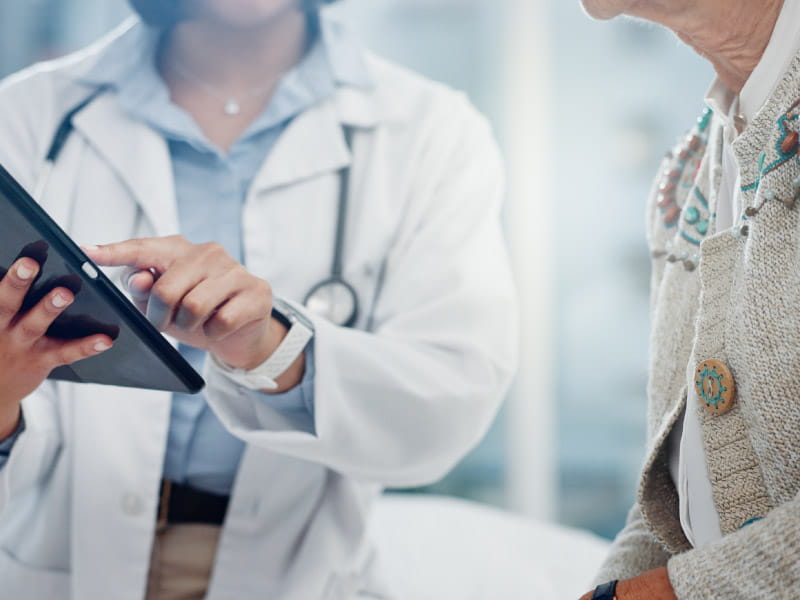AI-powered tool may offer contactless way to detect high blood pressure, diabetes
By Laura Williamson, American Heart Association News

A tool powered by artificial intelligence that uses high-speed video to detect changes in blood flow in skin on the face and hands may offer a new way to screen for high blood pressure and diabetes without the use of blood pressure cuffs, blood tests or wearable devices, new research suggests.
The study found the system accurately detected the vast majority of high blood pressure and diabetes cases in patients in a hospital setting in Japan. Findings are being presented Sunday at the American Heart Association's Scientific Sessions in Chicago. They are considered preliminary until full results are published in a peer-reviewed journal.
The contact-free system would allow people to monitor high blood pressure, or hypertension, and diabetes "in the comfort of their own homes without having to undergo any tests," according to the study's lead researcher Ryoko Uchida, a project researcher in the department of advanced cardiology at the University of Tokyo. Video monitoring allows for early detection of disease "in a noninvasive, non-contact and non-active manner, without having to constantly wear a device or go to a hospital for an examination."
Both hypertension and diabetes cause damage to blood vessels and subtly alter the way blood flows through the vessels. Researchers used high-speed video at 150 frames per second to capture pulse wave and blood flow movements in the face and hands of 215 people, including people previously diagnosed with hypertension and Type 1 or Type 2 diabetes, along with healthy people included for comparison. The participants, who were an average 63 years old, sat still on chairs in a hospital setting while five- and 30-second video images were taken.
Digital data representing blood flow characteristics was extracted from the video and transferred to a computer, where a machine learning algorithm analyzed it to detect hypertension or diabetes by measuring the difference in pulse wave arrival time to 30 different regions of interest, 22 on the face and eight on the hands.
Blood pressure was measured simultaneously using a continuous blood pressure monitor. Blood glucose was measured separately using an A1C test, which measures average blood glucose levels for the past two to three months.
When cross-checked with measurements taken with the blood pressure monitor, the video and algorithm combination system was 94% accurate in a subgroup of 77 people in detecting stage 1 hypertension, defined as having a systolic (top) number of 130-139 mmHg or a diastolic (bottom) number of 80-89 mmHg, according to AHA and American College of Cardiology guidelines.
When cross-checked with hemoglobin A1C testing for diabetes, the video-algorithm system was 75% accurate in detecting A1C scores of at least 6.5, the threshold for a diabetes diagnosis. The subgroup of 83 people tested for diabetes included people previously diagnosed with both Type 1 and Type 2 diabetes and those with A1C scores of 6.5 or higher.
The system is still in the early stages of development and may not be generalizable to other populations, Uchida said. Not only does it need to be tested on people outside Japan, but "the cameras and algorithms used have not been tested in dark or bright environments or outdoors, so additional research is needed to ensure that the system works everywhere."
It also may have limited usefulness, said Dr. Geoff Rubin, a professor and chair of the department of medical imaging at the University of Arizona College of Medicine in Tucson. While the system allows for contactless testing, he said it still requires people to adhere to protocols that may take just as much time and effort as other means of testing.
"Assuming people are willing to sit still in a controlled environment and submit to this, why not just put on a blood pressure cuff and draw a little blood in the same amount of time and have an absolute answer?" he asked.
Rubin, who was not involved in the research, also is clinical service chief of medical imaging for Banner University Medicine in Tucson.
"I am skeptical, but I am intrigued," he said. "The authors point out that wearables and remote sensing are tools that are potentially poised to revolutionize health care, but a lot of people don't engage with them. Getting data in this manner may be useful in some way down the line, but a lot of questions remain unanswered."
Find more news from Scientific Sessions.





